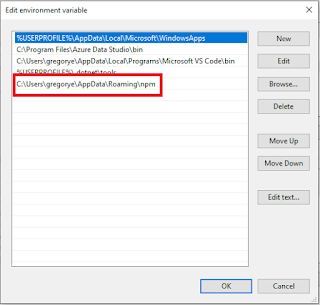WPF DataGrid Data Binding Using MVVM Pattern
Hello,
I've been developing WPF applications before but not having applied the MVVM design pattern and have been wanting to create a simple program that loads data into the DataGrid control. As a result of free time, here's a simple demonstration on using MVVM Pattern for Data Binding a WPF DataGrid control. According to Wikipedia, the components of an MVVM pattern are:
Model
Model refers either to a domain model, which represents real state content (an object-oriented approach), or to the data access layer, which represents content (a data-centric approach).
View
As in the MVC and MVP patterns, the view is the structure, layout, and appearance of what a user sees on the screen.
View model
The view model is an abstraction of the view exposing public properties and commands. Instead of the controller of the MVC pattern, or the presenter of the MVP pattern, MVVM has a binder. In the view model, the binder mediates communication between the view and the data binder.The view model has been described as a state of the data in the model.
Binder
Declarative data and command-binding are implicit in the MVVM pattern. In the Microsoft solution stack, the binder is a markup language called XAML.
Given the explanations above, here's the code that applies a plain MVVM approach.
ViewModel (CustomerViewModel.cs)
The model used here is the Northwind Customer
View (XAML)
For the details on how MVVM works see this thread WPF Having Trouble with binding a Datagrid control on load

Source Code: DataGridMVVMWPF In Github
Cheers! :-)
I've been developing WPF applications before but not having applied the MVVM design pattern and have been wanting to create a simple program that loads data into the DataGrid control. As a result of free time, here's a simple demonstration on using MVVM Pattern for Data Binding a WPF DataGrid control. According to Wikipedia, the components of an MVVM pattern are:
Model
Model refers either to a domain model, which represents real state content (an object-oriented approach), or to the data access layer, which represents content (a data-centric approach).
View
As in the MVC and MVP patterns, the view is the structure, layout, and appearance of what a user sees on the screen.
View model
The view model is an abstraction of the view exposing public properties and commands. Instead of the controller of the MVC pattern, or the presenter of the MVP pattern, MVVM has a binder. In the view model, the binder mediates communication between the view and the data binder.The view model has been described as a state of the data in the model.
Binder
Declarative data and command-binding are implicit in the MVVM pattern. In the Microsoft solution stack, the binder is a markup language called XAML.
Given the explanations above, here's the code that applies a plain MVVM approach.
ViewModel (CustomerViewModel.cs)
The model used here is the Northwind Customer
public class CustomerViewModel : ViewModelBase { private ObservableCollection<Customer> _cusGridData; private NorthwindEntities _context; public CustomerViewModel() { _context = new NorthwindEntities(); LoadInitialData(); } private void LoadInitialData(){ CustomerData = new ObservableCollection<Customer>(from c in _context.Customers select c); } public ObservableCollection<Customer> CustomerData { get { return _cusGridData; } set { _cusGridData = value; OnPropertyChanged("CustomerData"); } } }
<Window x:Class="WPFMVVMDataGrid.MainWindow" xmlns="http://schemas.microsoft.com/winfx/2006/xaml/presentation" xmlns:x="http://schemas.microsoft.com/winfx/2006/xaml" xmlns:ViewModel="clr-namespace:WPFMVVMDataGrid" Title="MainWindow" Height="350" Width="525"> <Window.DataContext> <ViewModel:CustomerViewModel/> </Window.DataContext> <Grid> <DataGrid ItemsSource="{Binding Path=CustomerData}" x:Name="dgCustomer" AutoGenerateColumns="False" SelectionMode="Single" SelectionUnit="FullRow" GridLinesVisibility="Horizontal" CanUserDeleteRows="True" CanUserAddRows="False"> <DataGrid.Columns> <DataGridTextColumn Header="Name" Width="SizeToCells" MinWidth="125" Binding="{Binding CustomerID}" /> <DataGridTextColumn Header="Age" Width="SizeToCells" MinWidth="200" Binding="{Binding ContactName}"/> <DataGridTextColumn Header="Description" Width="SizeToCells" MinWidth="200" Binding="{Binding Address}"/> </DataGrid.Columns> </DataGrid> </Grid> </Window>

Source Code: DataGridMVVMWPF In Github
Cheers! :-)



Comments
Post a Comment